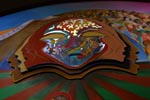 . |
1 | 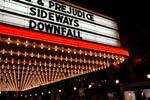 Chicago, Illinois, USA |
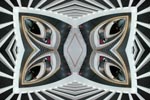 . |
2 | 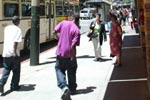 San Francisco, California, USA |
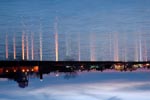 . |
3 | 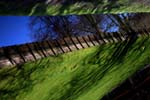 Alkmaar, Netherlands |
||
|
Photo
1) ?? Photo 2) ?? |
Photo
1) ?? Photo 2) ?? |
. . Since both photos are upside-down, the focus is not on the scenes in a normal sense. Photo 1) The focus is on the "roots" of light formed by their reflections in the water. Photo 2) The idea is the illusion of trees. The tops of the trees are the shadows on the grass at the very top of the photo. The middle and the trunks of the trees are the reflections in the water. The wooden edge of the Dutch canal represents the earth. The trees' "roots" are dark -- they are actually the same trees' shadows coming back onto the grass -- underground from the wooden edge "earth". (As for the photo itself, it is very interesting to look at once it is seen as "an entire tree including the roots". If you didn't see it at first, take another look.) While the subject is trees, interestingly, there are no trees in the picture whatsoever! As a metaphor, this means that often what seems like the "truth" is just an illusion -- a deception. Notice that the roots of deception are dark. It's easy to believe the pretend presentation / appearance of things. It's much harder to look past the decorations in order to see the actual reality. Seeing the "roots" of light and dark, is the key to seeing on a whole different level. . . |
||||||||
 Lake Louise, Alberta, Canada . |
4 |  . |
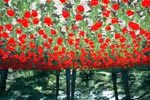 . . |
5 | 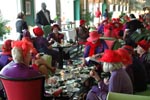 . . |
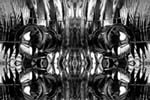 Close-Up Study -- Headlight of a Japanese Car |
6 |  Hawaii, USA . |
||
| Photo 1) Immense ice falls in Canada,
where the climbers are using sharp metal spikes in their ice axes and boots in order
to claw their way up the ice. Photo 2) Upside-down, these icicles take on the form of claws, and are now clawing up. Photo 1) Clawing up the ice. Photo 2) The ice is clawing up !! |
. . Photo 2) This is a gathering of a ladies' social club called "The Red Hat Society", and I want to honor them here. The RHS is for women primarily over 50 years old, who share the friendship of others in both fun and at extremely difficult times -- such as after the loss of a spouse or parent, or while dealing with a major life threatening illness. Photo 1) When this image is reversed (upside down), as it is here, these flowers give visual significance to the 2nd picture. The flowers are "red hats" that are raised -- as in "hats off". In English if someone says "my hat's off to you" that means they are giving their sincere respect to you. The synchronicity ? Represented by the first photo, the photographer wishes to say "hats off" (deep respect) to the man and woman on the left and the woman to the right in the second photo. I watched the scene for a while before I took this photo. These are 3 hard, hard working people who also deserve to be honored. This type of double synchronicity is in reverse order in the sense that the first image doesn't have meaning until the second image is seen. Then by referring back to the first, you can see the relationship that gives meaning to the 2nd synchronicity. The Red Hat Society Website: http://www.redhatsociety.com Viewer Comment: Love the red poppy synchronicity! Very cool! ~ Melinda . . |
Photo 1) ?? Photo 2) ?? |
||||||||
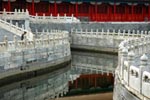 Forbidden City -- Beijing, China . |
7 | 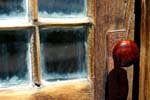 Locked Door, Ghost Town -- Bode, California, USA |
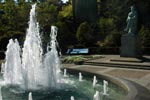 Yalta, Ukraine . |
8 | 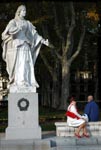 Madrid, Spain The Statue Reads: Reina De Leon / In English = Queen Of Leon |
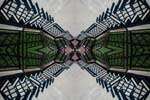 . |
9 | 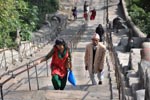 Stairway to Swayambhunath Buddhist Temple -- Kathmandu, Nepal . |
||
| Photo 1) The Forbidden City in Beijing,
China. While this is a very interesting and mysterious place for
non-Chinese people, imagine what it is like for the Chinese people !!
Built around 1420 AD, it was absolutely forbidden to enter or see the
inside by any but royalty for more than 500 years. It was opened to the
public on October 10, 1925. This Chinese man is not just walking around, but peering over in genuine curiosity to see all of it in more detail. Photo 2) A closed locked door of a ghost town. This is a metaphor for a loss of opportunity. Non-curiosity results in the lack of opportunity. The exact opposite of what the Chinese man is displaying. Curiosity is what drives innovation, which fuels the economy and better living by way of solutions to life's problems through refinement and invention. Sadly, more and more people nowadays are becoming un-curious. As doors (opportunities) are locked up for them right before their eyes, they become content to walk right past without question. |
. . Photo 1) The man is sitting in the exact same way as the statue, including the way his legs are crossed. He resembles the statue in a straightforward physical way, yet he is not posing, or consciously mimicking the statue. Notice that the statue has an educated, yet definite working class persona about it. Just exactly as the man has. This class awareness is something that all people from all over the world are sub-consciously aware of. Look again at the picture, it's unmistakable. Photo 2) Here, the woman is not in the same position as the statue, the statue is standing and she is sitting. But, there is a remarkable connection on a different, more subtle level. Looking only at the statue, and without reading the inscription on it, it is possible to tell what social class the "statue lady" is from. It's not at all working class, but rather extreme upper class -- if not ruling class. This is evident in her clothes, but more importantly in her "stature". The upper class way she carries herself. (The inscription on this statue reads in Spanish: Reina de Leon. In English this means Queen of Leon. It's not necessary to know this to see that the statue clearly represents a lady of the upper class.) One look at the real woman in the picture reveals that she's clearly a member of an upper class. This is evident not only by her fashionable appearance, but also her general posture, (stature). It's definitely not posed, and yet it is certain that she is not consciously mimicking the statue. Stature is not really about how someone looks regarding clothes, makeup, or jewelry -- but rather how they "carry themselves", which refers to often subtle posture, facial expressions, and body language. The word "statue" is related to it. A good artist captures a person's likeness, while a truly great artist captures their stature. The statues and the people in both photos are amazing synchronicities on a superficial level -- something like "man unknowingly imitating art" and "woman unknowingly imitating art". But, the real synchronicity is actually on a much more significant, deeper level. Both photos are demonstrating our powerful, yet, unconscious awareness of stature, twice in each photo. Important note: my definition of the difference of social class here is not a difference of dignity. All the subjects in these 2 photos are dignified. . . |
Photo 1) These stairs are going inward
towards themselves --
they could be said to be "stairing inward". Photo 2) Buddhist people making a climbing pilgrimage up the stairs to the temple. Taking the stairs, they are "stairing" (climbing stairs) upward. The essence of Buddhism, and all religions in general -- people honestly looking at improving their own self, this is what could be called "staring inward". Both people are "Stairing" (climbing) upward - ultimately in order to "stare" (look intensely) inward. Photo 1) "Stairing" inward. Photo 2) "Stairing" upward and "Staring" inward. |
||||||||
 . |
10 | 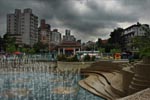 Fountain Outside of Longshan Buddhist Temple -- Taipei, Taiwan |
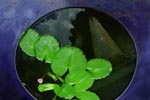 Bangkok, Thailand . |
11 | 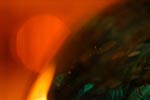 . |
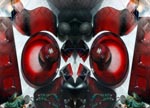 Volos, Greece . |
12 | 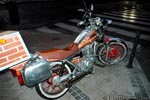 Madrid, Spain . |
||
| Photo 1) The water in this fountain is not behaving correctly -- it's rushing both forward and outward. Photo 2) This photo has a visual "criss-cross" to it. The taller buildings on the left correspond to the step-like formations on the right. Meanwhile in the upper right of the picture, it really looks like it ought to be raining at any moment, yet the only water in the picture is in the lower left -- exactly opposite of the area that it "ought to be raining". The connection is: Like the first photo, the water is not behaving correctly. It looks like it should be raining (down) at any moment -- but instead it's "raining up". |
Photo 1) In this picture of lily pads in Bangkok,
the water is reflecting the building, into the sky,
and beyond. Another visual cue -- this idea is equally
"reflected" in the look of the container around it -- almost
like nebula (star clusters) way out in the galaxy. Photo 2) This photo looks like a "sunrise on a "planet", and that is what it represents. Looking at the surface of the "planet", it is covered by lily pads ! This photo synchronicity represents vastly different viewpoints which
can be difficult, but important to hold simultaneously. |
. . Photo 1) This is a double (mirror image) photo of an actual shop window display of glassware and crafts, just as the shopkeeper placed the items. The original photo is 1 half of the picture. Out of the seemingly random dishes, glassware, and green worry-beads / necklace with the tassel -- when the photo is doubled in a mirror image, there suddenly emerges a picture of an angry man blasting through a set of double doors. Look closely, his moustache is enviously green, his eyes bloodshot, and he has wildly animated eyebrows. (It's sometimes easier to see if you look at this smaller picture first). How does it relate to the bottom photo ? Photo 2) A brick motorcycle. It's not everyday that you see one of these !! Photo 1) Returning to the shop window display. If you look there are bricks from the road being reflected in the window in 2 areas of the "angry man's face". The bricks in the upper area are in the area associated with rational thought. There has been a brick wall built up around this area for some reason. It's preventing the man from being able to set aside anger and envy in order to think rationally. Photo 2) It's easy to see the brick wall on the bike -- it's obvious, because it's unusual. The synchronicity: Brick walls are easy to see where they don't belong. But, it's very, very hard to see the brick wall in one's mind, because its very existence causes it to not be noticed. . . |
||||||||
 Taipei, Taiwan |
13 |  Athens, Greece |
 Bangkok, Thailand |
14 | 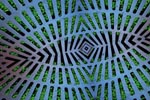 . |
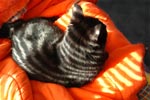 Muzzy 1991-2011 |
15 | 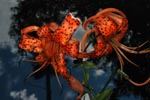 . |
||
| Photo 1) The lady inside the store is
scratching her head. This tells you that this synchronicity is going to be
very difficult !! There are also 2 other ladies. One viewer commented that it looks like the same lady, so that maybe the photo was a double-take / double-exposure. Actually this is just 1 photo -- and they are 2 different people. (I think they were identical twins !!) This tells you that you must look at this pair for a while, and do some double takes in order to see the answer. The full answer is yet to come, but in the meantime, here's a hint in rhyme: Look around the first photo, even if you don't read Chinese. Then look around the 2nd photo, to see the 4th of the ____. |
. . Photo 1) The man is moving headless fish from "chaos" on one side into an ordered pattern on the other. An intelligence is forming a recognizable order out of things that have zero intelligence. This order is only recognizable by a certain level of intelligence -- and most people can easily see the pattern. But, a cat for example, would not notice anything but fish on either side of the man. A cat doesn't think in a way that would recognize such patterns, but as a metaphor it would be because the cat's mind would be overpowered by the immediate idea of eating the fish, which would mask the noticing of any other qualities about the scene. This happens to people also -- distractions can easily overpower our ability to notice important patterns. Photo 2) It turns out that the individual "pieces" in this photo are shaped much like the fish with no heads in the first photo. Yet, these headless forms (representing zero intelligence) seem to be ordering themselves into a big picture pattern of -- a big fish !! How can this be ? . . |
. Photo 1) My cat, Muzzy. By the title under the photo, (Muzzy 1991-2011), he lived a happy life of almost 20 years. It was a very sad experience to lose him, as you can imagine. But, here a few years earlier, in better days, he is relaxing in the interesting sunlight pattern formed by Venetian blinds. Although he is all black, on this day he was being transformed into a striped feline. The brilliant orange of the blanket he's on is the second part of the illusion. When you mix these all together in your mind's eye, there's no question -- little Muzzy has become a ferocious tiger !! Photo 2) Brilliant orange flowers. They make nice funeral flowers for such a fine pet. What kind are they ?? Tiger Lilies. . . |
||||||||
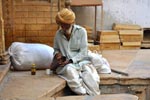 Jaisalmer, India |
16 | 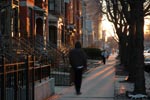 Chicago, Illinois, USA |
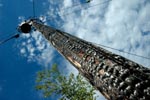 Michigan, USA |
17 | 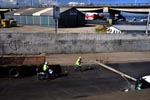 Rio De Janeiro, Brazil |
 Upper Michigan, USA |
18 | 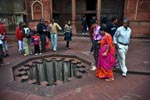 Delhi, India |
||
| Photo 1) ??
Photo 2) ?? |
Photo 1) ??
Photo 2) ?? |
. . Photo 1) This is a gaping hole in the ground, located in Upper Michigan, USA. Photo 2) Another gaping hole in the ground, located in Delhi, India. Curious with anticipation, the people in both countries are trying to see who is on the other side of the hole. I especially like the way the young ladies in the first picture are disregarding all danger to get a better look. Now look at the way the little boy in the 2nd picture is looking with jaw-dropping surprise, while an authoritative adult is, as they say "urging caution". This photo synchronicity seems to be saying that while some "urge caution", other people are becoming intensely curious about the people on the other side of our world. If you have access to a globe, check it for yourself. It is remarkable to see that these 2 holes connect pretty closely with 1 straight line "drilled" through our world. . . |
||||||||
 . |
19 |  . |
 . |
20 |  Shop Window Display of Marbles Found in Venice, Italy |
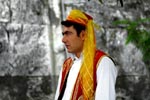 Istanbul, Turkey . |
21 | 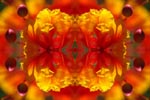 . |
||
. Photo 1) Here is a flower -- the form itself isn't the focus, since the entire flower cannot be seen. It represents a very definite color you have probably seen in another context. Photo 2) Here, frozen in place is a form suggestion. The focus is clearly on the distinctive form of the "icicles" between the 2 layers of ice. Look close at these ! Mix the 2 together in your mind's eye -- pink, gooey, bubble gum stuck to the bottom of a shoe on a hot day. This is tricky because the powerful component of color is separated from the form, and requires this to be "mixed" in your mind's eye by 2 separate brain regions, which perceive color and shape / form. The second part that makes this even more difficult, is that since ice is hard, (quite the opposite of sticky bubble gum), the substance of the form requires "undoing". The idea of ice sets your mind to think of cold -- specifically "winter". All of this happens even though this is only a photograph, and we don't really "know" that it is cold and frozen. Of course, gooey gum stuck to the bottom of a shoe is all about the exact opposite -- "summer". Imagine how you, as an artist would make a drawing of sticky, gooey gum peeling up between the sidewalk and a shoe. BUT -- you only get to use a black pencil on white paper. Without any color information, the gooey strands would look almost identical to the icicles in the 2nd photo. What this photo synchronicity is saying: Our minds tend to react automatically to fill in information before we actually analyze it. When this happens, just like gum on the bottom of a shoe, thinking becomes gummed up, and almost it becomes almost impossible to get unstuck. . . |
Photo 1) ?? Photo 2) ?? |
Photo 1) & Photo 2) This is the easiest of this month's series. It is a remarkable color match between the festive outfit of the man in Istanbul, Turkey, and a close-up flower study. The flower is "Red Bird of Paradise". |
||||||||
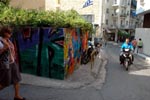 Athens, Greece |
22 |  . |
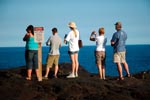 . |
23 |  . |
 . |
24 | 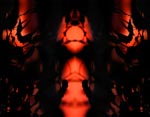 . |
||
| Photo 1) What's about to happen next
? The information here is subtle, but the answer is easy to see with a closer look. The scooter is tipping inwards, the man's weight and line of sight is shifted slightly to his right, and his fingers are on the brakes -- he's about to turn right. Meanwhile the woman is thinking about other things while she walks (look at her facial expression, and defenseless posture). She stepped into the scene the moment I was taking the picture. Neither is aware of the other. Photo 2) What is about to happen in photo 1 is suggested by the two ferns in photo 2 -- Unintended Intersection. Neither one notices the other! Yes, the people almost did crash, but luckily the speeds were slow enough that the man was able to stop in time without falling off or hitting the lady. In real-world driving, being able to quickly recognize how a situation will unfold several steps ahead of the result is ultra important. The clues are usually subtle, making them very hard to notice. The most common reason given for accidents?? Both people think that the other person didn't notice. What this photo synchronicity is saying: The more you notice other people not noticing, it's a hard thing to not notice. |
. . Photo 1) The people are obviously disobeying the warning sign, as they are right in front of it and clearly not concerned about the dangers it is advising about. Photo 2) In order for their to be a connection to the first photo, this photo must have been taken from the same vantage point, a few moments earlier, or later. This means that the photographer is involved in the synchronicity. This photo synchronicity is about conformity, and group pressure. "Going Over The Cliff" is probably the best known (universal) metaphor for this.
Depending on the order of the photos' actual occurrence: |
Photo 1) The anteater. From the
viewpoint of an ant, it is a fearsome predator, yet here it is harmlessly
captured in a cage. Photo 2) This is a "Rorschach" - like picture -- in which 2 mirror-image halves are combined to form a new image. The single photo is actually a placid sunset scene through tree leaves. After viewing the first photo -- the suggestion is that the second photo contains individual attributes of a very powerful ant. |
||||||||
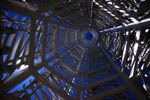 San Francisco, California, USA . |
25 | 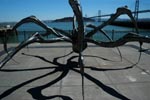 San Francisco, California, USA -- A Few Blocks Away From The Location Of The 1st Photo On This Page . |
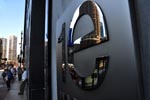 Chicago, Illinois, USA . |
26 | 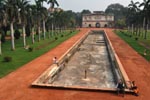 Delhi, India . |
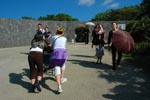 An American wearing a Jamaica hat helping a Japanese woman push her mother's/grandmother's wheelchair up a very steep hill. . Okinawa Island, Japan |
27 | 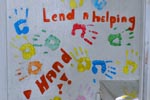 Small community volunteer sign up station at J.R O'Neal Botanical Garden, Road Town, Tortola, British Virgin Islands .. |
||
| . . Photo 1) This picture by itself is unlikely to cause a secondary image/idea, until the 2nd photo is looked at. This is a radio tower-like structure, which is what its function is. On the page, only a location was given -- San Francisco, California, USA. Photo 2) This is clearly a metal spider sculpture, and it is clearly intended to be just that -- an art sculpture. Suddenly, upon seeing the 2nd photo, the image in photo 1, becomes "a spider web". But in reality, to passersby on the street, it's not at all a spider web, it's a radio tower. The reason the connection happens here has to do with the context that occurs when the 2 photos are put together on the same page. On the first level it's kind of a fun "spider and spider web" connection. The deeper idea of what this synchronicity represents -- is the very idea of synchronicity !! Has this ever happened to you: A) You learn some information -- in school, reading, watching TV or talking with a friend. Or it could be an event that you experienced. Something happens, but at the time it doesn't seem significant. B) Some time later you receive some other info, or experience something that could either contradict or confirm the first information. The problem is, since the first thing seemed insignificant at the time, it's less likely to be remembered -- in fact it tends to be completely forgotten. Without the second information, the first wasn't meaningful which is what makes things easy to remember. How do the photos express this idea ?? In 2 ways -- in both the photos, and in the actual place. Even though the photos are out of order, (the first photo has little meaning until the suggestion provided by the second) -- on the "web-page" there is a short period of time between the 2 "informations" and so it's easy to scroll up to refer back to the first photo. Photo 2) The spider photo is labeled: "A few blocks away from the location of the 1st photo on this page". It is quite amazing that these unintended connections are so close geographically to each other in real-life !! Many people could walk right past both of these structures without ever seeing the spider and web connection. I did exactly that -- it wasn't until I looked through the photos several times that I suddenly noticed the connecting "web" of this synchronicity. . . |
Photo 1) The "1e"
sign is
reflecting a well-known example of architecture in the great city of Chicago.
The reflection is sharp, focused, and well defined. Photo 2) This mostly empty reflecting pool is intended to reflect the building I'm taking the picture from. Although this pool is almost empty, it is still reflecting from 5-6 small puddles. This is reflecting in a dispersed, fragmented, partial way. Photo 1) The man leaning against the building is reflecting (pondering, thinking deeply -- mirroring an idea in order to re-think it), while still quite aware of his surroundings.) The 5-6 people about to walk past him are reflecting much less deeply, perhaps more like the distracted partial reflecting represented by the empty reflecting pool's puddles in the second photo. Photo 2) The Indian couple, are reflecting -- relaxing while taking in their surroundings, like the man in the first photo. The young western man is much more deeply reflecting -- like the "1e" sign in the first photo. This brings to mind a common reason that westerners visit India, in the manner of a spiritual pilgrimage. What this photo synchronicity is demonstrating: Physical reflection in different levels mirroring mental reflection on different levels. |
Photo 1) Okinawa island was the site of
a long and notoriously horrible battle between the USA and Japan in World
War II. Here on Okinawa, an American woman is helping a Japanese woman push an elderly woman in a wheelchair up a very steep hill. The Japanese woman's mother (or grandmother) in the wheelchair looked like she could have been on Okinawa during the war. The idea here is the remarkable forgiveness and friendship that many of the younger generations are displaying. Photo 2) As noted on the page, this is a very small town community volunteer sign-up for a park on a small island in the Caribbean. How is this related to the first photo ? The 2 photos were posted a few weeks after the March 11, 2011 earthquake that hit northeastern Japan. This was around the time that it was being realized how difficult the recovery process would be -- a steep, uphill effort. Relief efforts for volunteer contributions from around the world were started by many organizations, including the one that is linked to on the photos' page. The idea is that there is a volunteer sign-up for the earthquake relief effort. That is, to help others without being required to, for the sake of kindness and cooperation. Like the small island community in the 2nd photo. Our world has become like the small Caribbean island community in the 2nd photo. A world community in which the welfare of each other is important to the whole. The final synchronicity that pulls it all together -- the lady volunteering in the first photo in Japan is wearing a hat featuring the flag of a Caribbean island. You Can Donate To The Japanese Red Cross Society
Earthquake Relief Fund Through
This Page Using Google Checkout: Or Via Bank Deposit Direct To The Japanese Red
Cross Society: |
||||||||
 Wisconsin State Capitol Building -- Madison, Wisconsin, USA . |
28 | 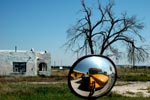 USA . |
 Rare Giant Redwood Trees, California, USA . |
29 | 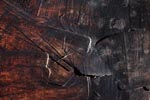 . . |
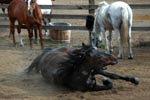 Colorado, USA . |
30 | . . . . . 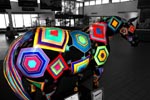 Southwestern USA The card says the title of the artwork (in Spanish): "Caballo De Ojos" In English that means "Horse Of Eyes" (Artist: AE Strait) . |
||
|
Photo
1) ?? Photo 2) ?? |
. . Photo 1) Rare Redwood trees. They took over a thousand of years to achieve this grandeur. A single man is seen entering the visitor center to learn about them, in the context of history. Some other people are also visible. Photo 2) The face of the stump of a chopped down Redwood tree. Look closely -- it's not just the face of the cut, but the cut pattern itself has the remarkable formation of a "face" of malice and greed on it. In fact it's even drooling quite a bit ! Imagine -- back in the day, a single man (just like the relatively small man in the 1st photo) and a few assistants could chop down a Giant Redwood tree in an hour or two. One of the largest Redwoods was chopped down just to bring to an exhibition back East. You can learn all of this in the park visitor centers. Luckily, some people worked to stop the chopping before the mighty Redwood forest became a field of stumps. Nowadays, most people are baffled by many things of past history, that were taken as perfectly normal by the people of the time. We now know that people -- just like us -- from the 19th and 20th century often acted with a lack of awareness/consciousness as to what they were doing. History is consistently filled with situations like this, but modern people tend to think that we would have been different if we were in that situation. And yet, history predicts that the people of the future will be amazed at our current early 21st century lack of awareness/consciousness. What this photo synchronicity is asking is: Why are people stumped by history ?? [In English, a stump is a chopped down tree, but when people are "stumped", it means they are baffled / confused / tricked / unable to figure something out.] . . |
Photo 1) This is what they call a "spirited" horse. It has a certain innate
independence that makes it hard to completely tame. What if you're not
around horses often ?? To
recognize a horse's spiritedness you can really see it in its eyes. Photo 2) The Spanish title of this artwork was given on the page -- "Caballo De Ojos" -- with the English translation given as "Horse Of Eyes". You have to look closely at them to see what these "eyes" really are. They're not horse's eyes, but rather depictions of a traditional arts / crafts yarn project known in English as "God's Eyes." I'm not sure how it is in other countries, but if you grew up in the USA, it's almost certain that you (or someone you know) made these in kindergarten or 1st grade. What this photo synchronicity means: Photo 2) God's Eyes on a horse -- these are eyes on a horse that are Spiritual. Photo 1) Spirited eye(s) of a horse. |
||||||||

Singapore
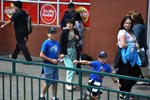
Valparaiso, Chile
.
This is one of the most difficult in this first month's series !!
Photo 1) The lower sign says "mind your head". In Singapore, English [British English] is widely-spoken and universal, but somehow this sticker actually has a double-meaning, that was not intended. This was why I took the picture -- it's a very intriguing idea.
In this photo, "Mind Your Head" meant -- "be careful not to hit your head on something". This most often means -- be careful while passing through a low doorway or under a low ceiling.
Photo 2) In this picture of the people from Chile, are there any details that you can see that would be the start of a clue??
The T-shirt of the older boy has a very recognizable cartoon logo from the Simpsons TV show. The words are hard to see, but they are in English. It is easier to see what the cartoon figure is doing -- he's hitting a soccer ball with his head. Even if one didn't know the TV show, it would be possible to deduce what the words probably say, and then it becomes easy to actually read them.
Using his head to hit the soccer ball. With this in mind, it is much easier to see that the words are "Use Your Head".
Back to the first photo and its double meaning. "Mind Your Head", -- it is British English, and the word "Mind" is like "be aware of". In American English it might say "Watch Your Head". In this case, the word "Mind" causes the unintended 2nd meaning -- something like: "make a conscious effort to use your mind to maintain and increase your mind". (It reminds me of the saying "pull yourself up by your bootstraps" -- in a purely mental way...)
So while it means "think of the well-being of your head" in a physical sense, the double meaning is "think of the well being of your head" in the mental sense.
The cartoon T-shirt in second photo is saying a similar idea, but in the opposite direction.
Whereas in the first picture the idea was don't hit your head on something, photo 2's idea is saying do hit your head on something -- and the implication is that this is using your head, but it's a joke, because it also has a double meaning. The photos are starting to connect.
"Use Your Head" as a saying always means "think". The idea portrayed by the cartoon character is intentionally mocking this, using the saying in an "ironically dumb" way to say "Use Your Head" for a physical purpose like hitting a ball during exercise. (This is not saying that the sport of soccer is dumb.)
Have you ever heard the saying "Use Your Head" spoken by people who don't really think ?? It's not often used as helpful advice said for the benefit of the other person -- it's really more of a mindless insult said out of anger. The author of the cartoon character is intending it as irony, because what makes it funny is that the child cartoon character is smarter than adults, and the adults aren't able to recognize this. Even if you don't know the cartoon show, this idea is all contained in the shirt logo. It's making fun of the idea that the phrase "Use Your Head" is said all the time by people (especially adults) who don't really think very deeply themselves.
So, if that was all there was to this synchronicity -- then it would simply be saying "Use Your Head" in the way that the second picture's T-shirt is making fun of -- as a mindless saying, without anyone really thinking.
Instead, the synchronicity is suggesting something positive -- exercising your mind -- really works. (A clue that there's probably a deeper level to this !!)
Where, specifically would the "Mind Your Head" sticker in the first photo be seen ??
Keep in mind, that idea.
Observing the 4 people in foreground of the second photo:
They are all curious about something, but their attention appears to be split on different things -- or is it ??
The 2 kids are clearly looking at me, they can see the camera.
The mom, (you can tell, because she's holding the boys' jackets), and the other lady, are looking at something -- else ??
They are on a sidewalk, which means I must be on the street. Maybe they are all seeing the same thing !!
The angle that I'm positioned at in relation to them -- is definitely a little higher. You can judge that the distance between the gaze of the kids and the gaze of the woman on the left is about 40 feet / 12 meters difference in direction apart, while the mom's gaze is in between these 2 points. One's attention is on the front of a 40 ft / 12 M long object that has suddenly caught their attention, while some are looking towards the back of it.
The answer:
Photo 1) and Photo 2) were taken while on a bus. (The Mind Your Head sticker in the first photo was a friendly reminder as you leave the bus.)
.
.
.
Comments:
commentonthisphotosynch@gmail.com